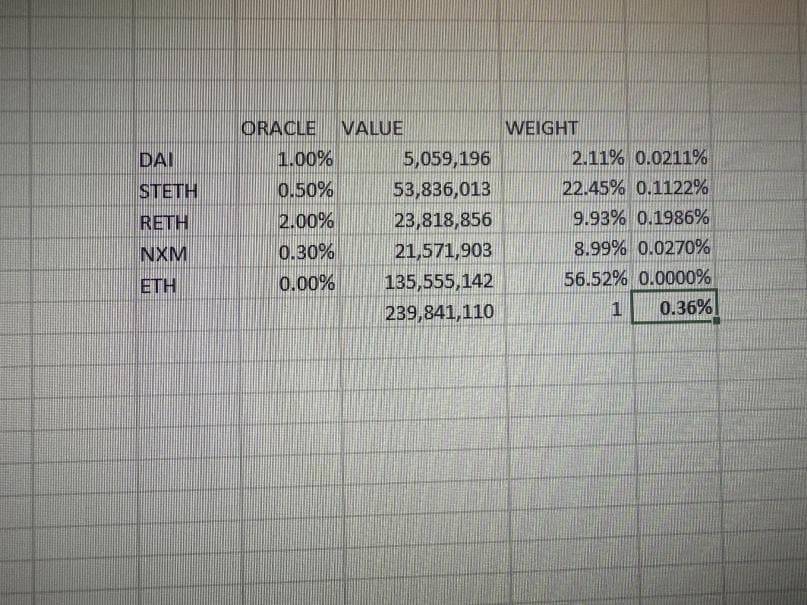Parameter Discussions (Part 3) | Oracle Buffer and Initial Prices
Overview
In this discussion, the R&D team will share their recommended approach to setting the Oracle Buffer and Initial Price parameters.
The aim is for the community to review these parameters, analyse R&D’s recommended approach and how it impacts the RAMM, and share any alternative recommendations for any of the above parameters during the discussion period.
Goal
At the end of the Part 3 discussion, members should have had the opportunity to review the R&D team’s recommended approach to setting the Oracle Buffer and Initial Price parameters and provide any feedback or alternative approaches during the discussion period.
At the end of the Part 3 discussion, the RAMM parameters will be in place and ready for feedback from the economic audit by Chaos Labs. Once the Engineering team has completed the RAMM’s development and the Solidity audits are complete, the final parameters will be included in the on-chain governance proposal for deploying the RAMM.
Parameters discussed in Part 3
The parameters that will be discussed are:
| Parameter | Description |
|---|---|
oracle_buffer |
Margin to allow for oracle lag when calculating Book Value in ETH. Secondary function - create spread |
spot_price_a |
Current price at which members can exchange ETH for NXM |
spot_price_b |
Current price at which members can exchange NXM for ETH |
*While the R&D team will share their recommended approach to setting these parameters, Chaos Labs may recommend alternative parameters to ensure the RAMM meets its goals and is secure against economic attacks. The parameters discussed thus far will be the basis of the testing and simulations performed by Chaos Labs but we will remain open to changing them if they are proven to be inadequate. The liquidity goals agreed by the members in the Stage 1 parameter discussion will remain as the target of all parameter setting.
Oracle Buffer
There is an identified need for an oracle buffer, which creates a small window around BV, where no buys or sells are allowed–this is done to allow for oracle lag when BV is calculated in ETH terms.
Oracle delays may mis-represent the BV temporarily and create arbitrage opportunities that do not benefit the mutual in any way, and this can result in value destruction for members who hold NXM.
In practice this means that, if the oracle buffer is set at B, the Below Pool will ratchet to (1-B)*BV and the Above Pool will ratchet to (1+B)*BV, meaning the two spot prices will not overlap without the book value itself changing.
Initial Prices
The Initial Prices refer to the opening spot prices used in the Above and Below pools when the RAMM is launched.
The R&D team will provide more detailed information on this parameter in their recommended approach.
Timeframe for discussion
This discussion will take place from Monday (18 September) until Monday (25 September).
At this time, there is no plan for a Snapshot signalling vote, as R&D will provide one recommended approach to setting these parameters.
- Should members present alternative approaches to setting these parameters, a Snapshot signalling vote may be held.
Overview & Resources
We’ve outlined the scope of the Liquidity Parameters Discussion in the Overview post. You can refer to this post for an introduction to both Parts 1 & 2 of this discussion.
If you have questions about the Ratcheting AMM (RAMM) or you want to learn more about the RAMM itself, please see the Pre-Discussion Phase: RAMM Education Guide, Call for Questions post.
If you want to catch up on the Liquidity Parameter Discussions Part 1 and Part 2, see the Liquidity Parameters Discussion (Part 1) | How much ETH liquidity do we start with? and the Liquidity Parameters Discussion (Part 2) | What parameters do we need to achieve the outcome members’ signalled support for in Part 1? post on the forum, where you will also be able to find the results of the three Snapshot signalling votes.
